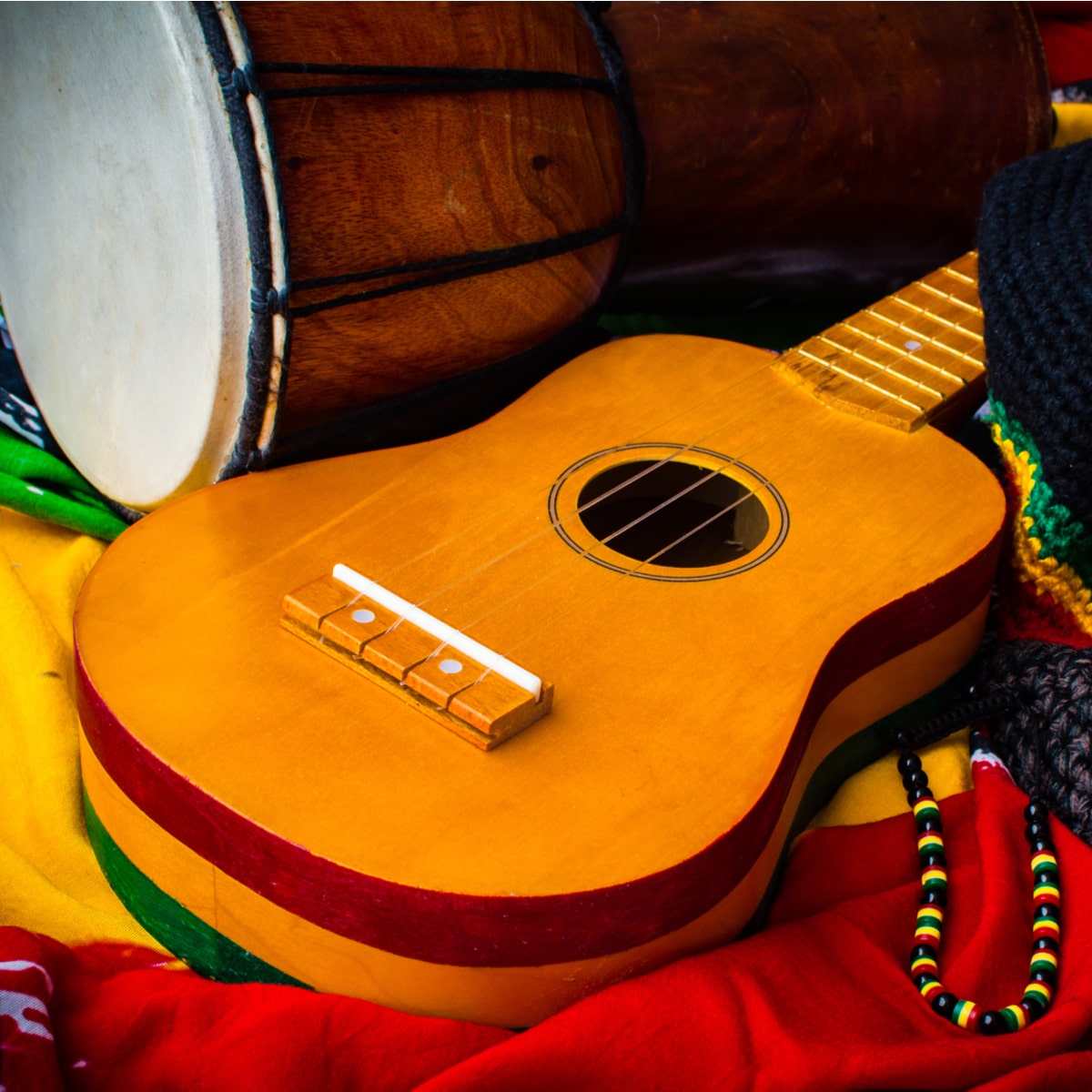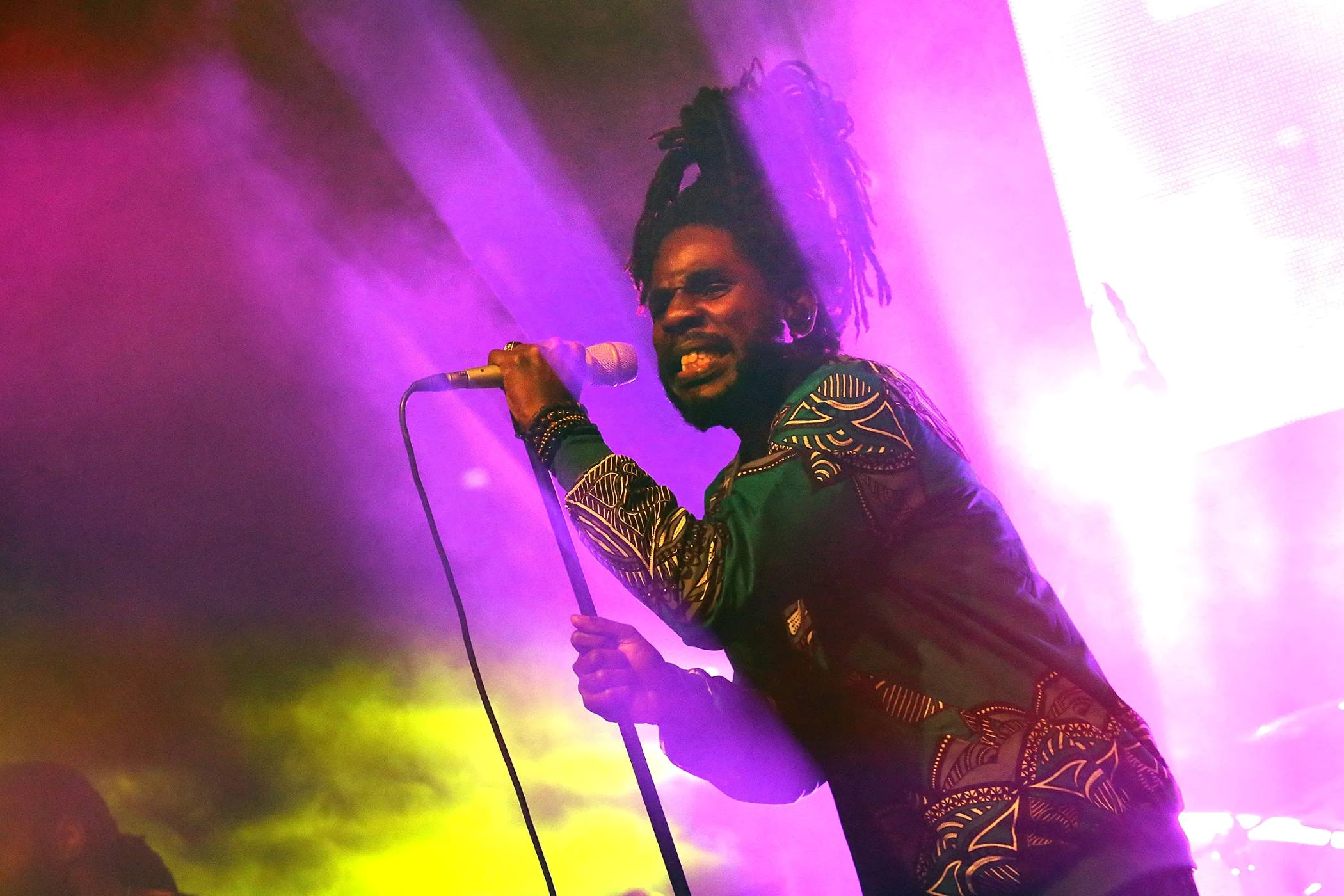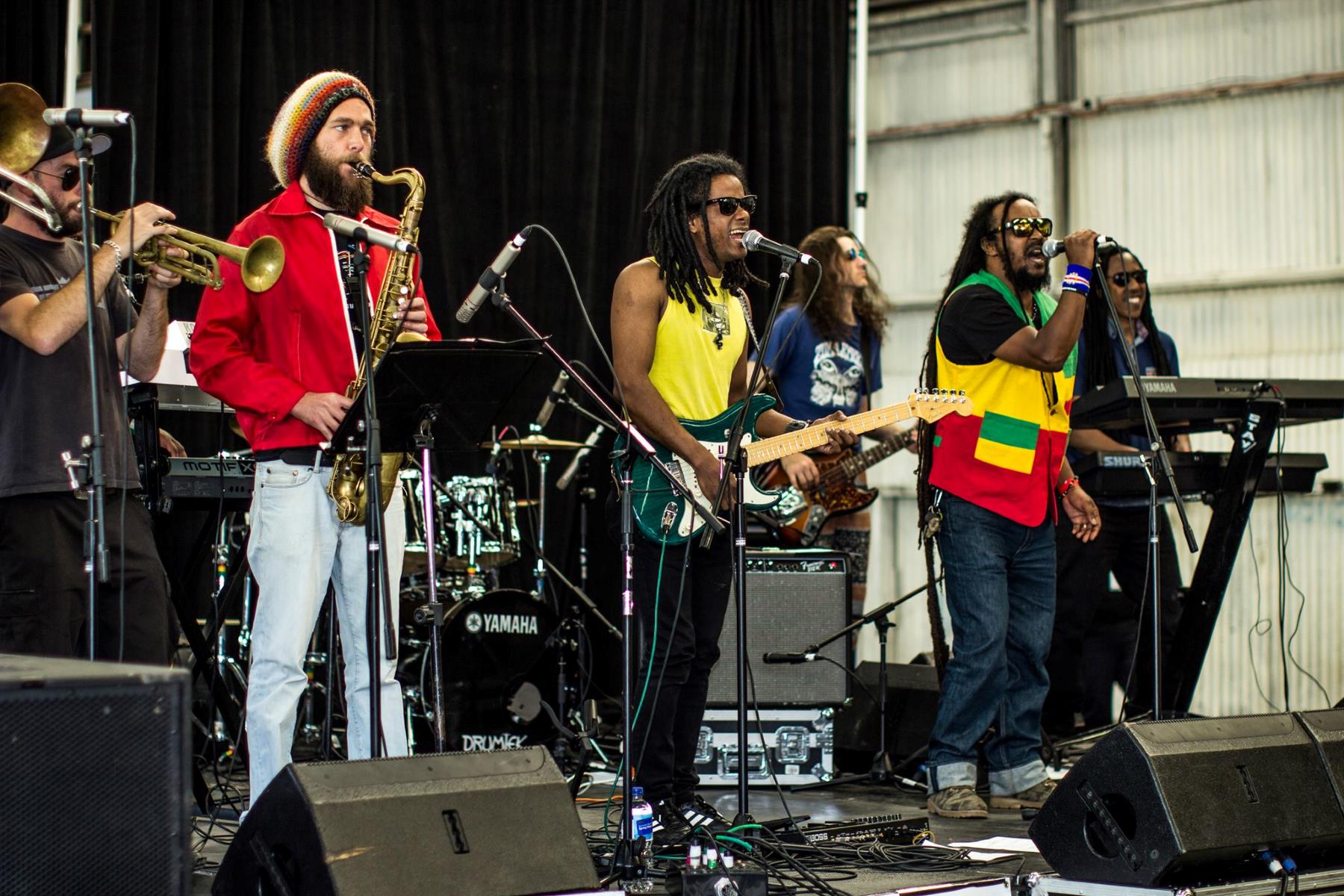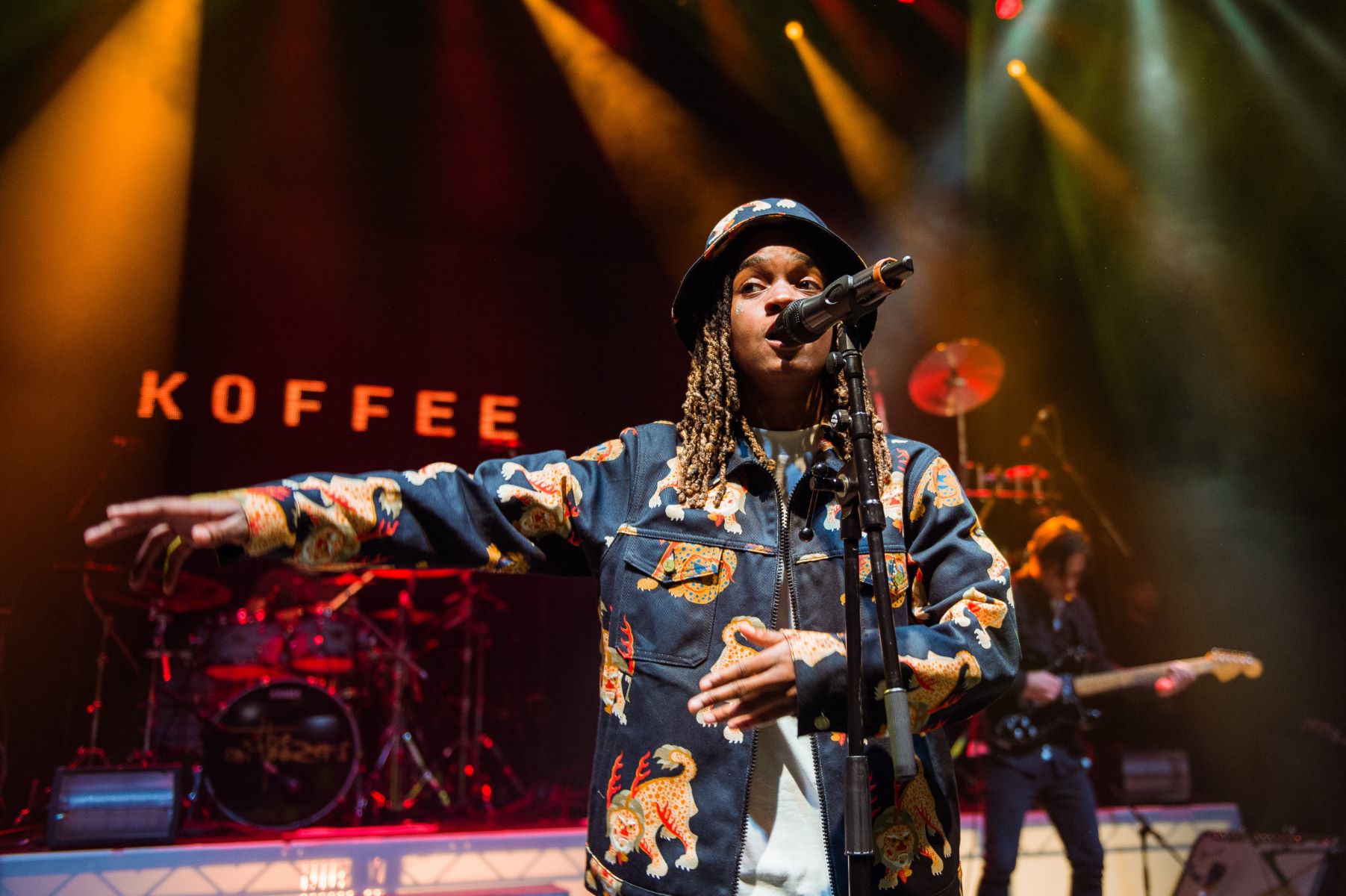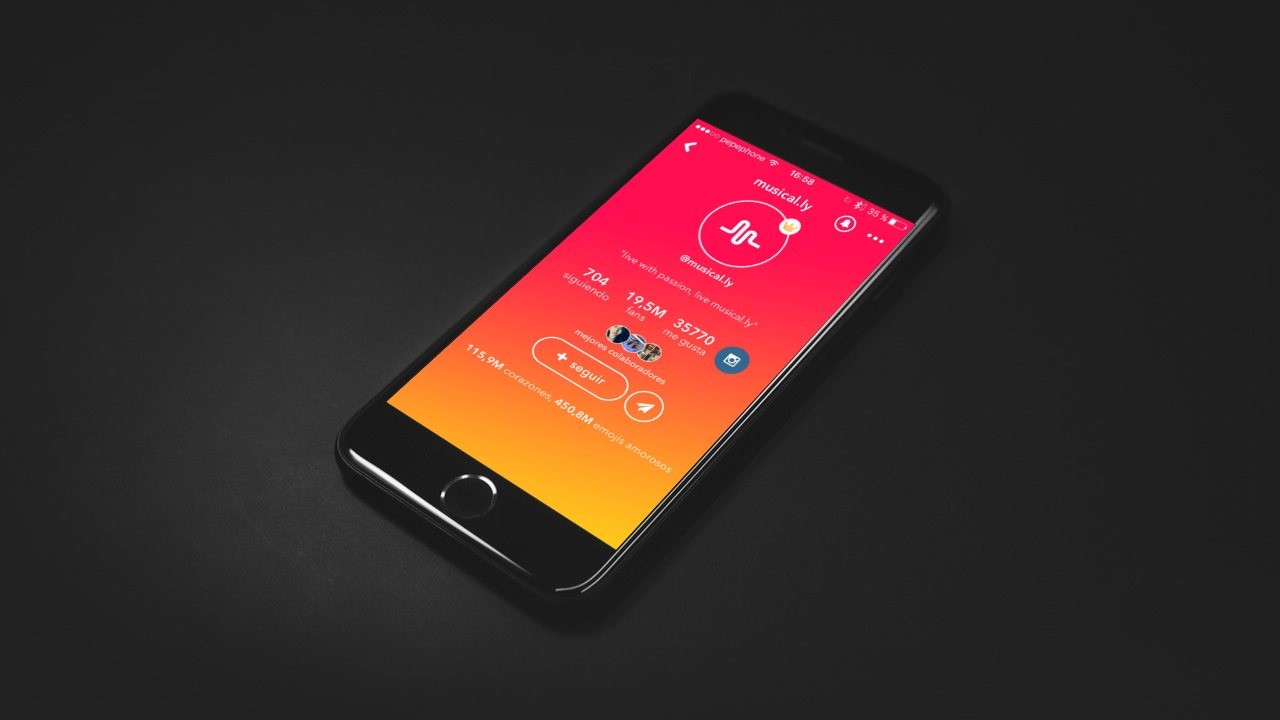

Reggae
How To Make Reggae Music
Modified: February 15, 2024
Learn how to make authentic reggae music with our step-by-step guide. From the roots of reggae to mastering the rhythm, discover the secrets to creating your own uplifting reggae tracks.
(Many of the links in this article redirect to a specific reviewed product. Your purchase of these products through affiliate links helps to generate commission for AudioLover.com, at no extra cost. Learn more)
Table of Contents
- Introduction
- The Origins of Reggae Music
- Key Elements of Reggae Music
- Understanding the Rhythm in Reggae
- Creating the Bassline
- Crafting the Chords
- Incorporating Dub Techniques
- Working with Horns and Melodies
- Utilizing Percussion and Drums
- Writing Authentic Reggae Lyrics
- Recording and Mixing Reggae Music
- Final Thoughts
Introduction
Welcome to the world of reggae music, a genre that originated in Jamaica in the late 1960s and has since captivated audiences worldwide. Reggae is not just a genre of music; it is a cultural movement that symbolizes unity, social consciousness, and artistic expression. With its infectious rhythms, soulful melodies, and powerful lyrics, reggae has become a powerful force for social change.
In this article, we will explore the origins of reggae music, its key elements, and the techniques used to create its distinctive sound. We will delve into the rhythmic patterns, basslines, chords, and the unique dub techniques that give reggae its signature sound. Additionally, we will discuss the role of horns and melodies, percussion and drums, as well as the art of writing authentic reggae lyrics. Finally, we will touch on the process of recording and mixing reggae music to ensure it captures the essence and energy of this iconic genre.
Whether you are a musician looking to delve into the world of reggae or simply a music lover interested in learning more about this influential genre, this article will provide you with a comprehensive guide to understanding, appreciating, and creating reggae music. So, let’s dive in and explore the magic of reggae!
The Origins of Reggae Music
Reggae music has deep roots in Jamaica’s rich musical history. It emerged in the late 1960s, evolving from earlier Jamaican musical styles such as ska and rocksteady. The term “reggae” was coined by the late Jamaican musician Toots Hibbert, referring to the rhythmic pattern that characterized the genre.
One of the pioneers credited with popularizing reggae music internationally is Bob Marley. His iconic songs, such as “One Love” and “No Woman, No Cry,” brought reggae to the global stage and cemented its place in music history. Marley’s music was not only filled with infectious rhythms but also carried powerful messages of unity, love, and social justice, making him a beloved figure across the globe.
Reggae music embodies the spirit of the Jamaican people and reflects their experiences and struggles. It incorporates elements of African drumming, mento (a popular Jamaican genre), rhythm and blues, and jazz. The lyrics often address themes of social and political issues, spirituality, love, and cultural identity.
One of the significant influences on reggae music is Rastafarianism, a religious and cultural movement in Jamaica. Rastafarianism plays a vital role in the lyrics and symbolism of reggae music, promoting messages of peace, equality, and the worship of Emperor Haile Selassie I of Ethiopia.
Reggae music gained popularity not only in Jamaica but also in the United Kingdom and other parts of the world. It became known for its distinctive off-beat rhythms, characterized by the emphasis on the third beat in a four-beat cycle. This unique rhythmic pattern, known as the “skank,” gives reggae its infectious and danceable quality.
Over the years, reggae music has evolved and branched out into various sub-genres, including roots reggae, dancehall, reggae fusion, and dub. Each sub-genre brings its own unique sound and influences, allowing reggae to continually reinvent itself while staying true to its roots.
The pioneers and legends of reggae music, from Bob Marley and The Wailers to Jimmy Cliff and Burning Spear, have left a lasting legacy, inspiring generations of musicians and music lovers. The influence of reggae can be felt across different genres, from pop to hip-hop, showcasing its universal appeal and ability to connect people from all walks of life.
As we delve deeper into the key elements and techniques of reggae music, let us keep in mind the rich history and cultural significance behind this genre. By understanding its origins, we can better appreciate and create music that honors the spirit of reggae.
Key Elements of Reggae Music
Reggae music is characterized by a distinct set of elements that contribute to its unique sound and vibe. Understanding these key elements is essential for creating authentic reggae music. Let’s explore these elements in more detail:
- Off-Beat Rhythm: One of the defining features of reggae is its off-beat rhythm. Instead of accentuating the typical downbeat, reggae emphasizes the offbeat, creating a relaxed and syncopated feel. This rhythmic pattern, known as the “skank,” is central to the genre’s infectious and danceable nature.
- Bassline: The bassline in reggae is often melodic and prominent, driving the rhythm and adding depth to the music. It typically follows the off-beat pattern, filling the spaces between the guitar chords and providing a sturdy foundation for the rest of the instruments.
- Chords: Reggae guitar chords are often played on the offbeat, using simple triads or voicings to create a rhythmic and atmospheric backdrop. These chords are usually played in a staccato style, with emphasis on the upbeat.
- Dub Techniques: Dub is a sub-genre of reggae that focuses on studio production techniques, creating instrumental versions of songs with heavy use of effects like echo, reverb, and delay. Dub techniques, such as dropouts, echoes, and the manipulation of instruments and vocals, add a sense of space and dimension to reggae music.
- Horns and Melodies: Brass instruments, such as trumpets and trombones, are often used in reggae to create melodic lines and add a vibrant, uplifting element to the music. The melodies in reggae can be catchy and memorable, playing a crucial role in creating a sense of joy and celebration.
- Percussion and Drums: Percussion instruments, such as congas, bongos, and shakers, are integral to reggae, adding layers of rhythmic complexity and texture. The drum patterns in reggae are typically sparse but groovy, with emphasis on the snare drum on the third beat and the use of a distinctive “one-drop” rhythm.
- Authentic Lyrics: Reggae lyrics often address social and political issues, spirituality, love, and cultural identity. They can serve as a powerful tool for expressing the struggles and aspirations of the people. From uplifting messages of unity and peace to calls for justice and equality, reggae lyrics carry profound meaning and resonate with listeners.
These key elements work together to create the unmistakable sound of reggae music. However, it’s important to note that reggae is a versatile genre that allows for experimentation and blending with other styles. By understanding these foundational elements, you can build a strong musical framework to create your own unique reggae compositions.
Understanding the Rhythm in Reggae
The rhythm in reggae is the heartbeat of the music, giving it its infectious and groovy character. It is essential to grasp the unique rhythmic patterns in reggae in order to authentically capture its essence. Let’s delve into the rhythm of reggae:
The most distinctive aspect of reggae rhythm is its off-beat emphasis. Unlike many other genres where the emphasis is on the downbeat, reggae places emphasis on the offbeat, particularly the third beat of each four-beat measure. This off-beat pattern, also known as the skank, creates a relaxed and syncopated groove that is the foundation of reggae music.
To understand the off-beat rhythm, imagine a four-beat measure. The first and third beats are the downbeats, while the second and fourth beats are the upbeats. In reggae, the emphasis is placed on the upbeats, creating a bouncy and uplifting feel.
The guitar is a crucial instrument in reinforcing the off-beat rhythm in reggae. It commonly plays chords on the upbeats, achieving a staccato effect by quickly muting the strings after each strum. This technique, known as the “chop,” adds to the rhythmic drive and creates a distinctive reggae sound. The guitar’s skanking rhythm, combined with the bassline and drums, forms the backbone of the reggae groove.
Speaking of the bassline, it plays a vital role in shaping the rhythm and feel of reggae music. The bassline often mirrors the guitar’s off-beat chords, solidifying the syncopated groove. It typically follows a repetitive and melodic pattern, adding depth to the overall sound and helping to propel the rhythm forward.
In addition to the guitar and bassline, the drums and percussion instruments contribute to the rhythmic complexity of reggae. The drum patterns in reggae are relatively simple but emphasize the snare drum on the third beat, known as the one-drop. This accentuated snare hit, combined with other elements such as hi-hats and rim shots, creates a driving and infectious rhythm.
Percussion instruments like congas, bongos, and shakers also play a role in enhancing the rhythmic texture of reggae. They add layers of intricate rhythms and provide a sense of groove and movement to the music.
Understanding and internalizing the unique rhythm of reggae is crucial for musicians looking to create authentic reggae music. It’s a combination of the off-beat guitar chords, bassline, drums with the emphasis on the third beat, and the use of percussion instruments that come together to form the infectious and captivating rhythm that defines reggae.
By grasping the rhythmic foundation of reggae, you can create music that captures the spirit and energy of this genre. So, feel the pulse, embrace the off-beat groove, and let the rhythm guide you on your reggae journey.
Creating the Bassline
The bassline in reggae music is a fundamental element that plays a pivotal role in driving the rhythm and adding depth to the overall sound. It is crucial to create a bassline that complements the off-beat groove and enhances the reggae vibe. Here are some key tips for creating an authentic reggae bassline:
1. Emphasize the Root Note: The root note of the chord being played is the foundation of the bassline. In reggae, the bassline often stays on the root note, providing a strong anchor for the other instruments to build upon.
2. Syncopation: While the off-beat rhythm is a hallmark of reggae, it’s important to incorporate some syncopation into the bassline. Add rhythmic variations, such as slides, hammer-ons, or ghost notes, to create interest and enhance the groove.
3. Melodic Movement: Reggae basslines are known for their melodic movement and flow. Experiment with simple melodic phrases that connect different root notes within the chord progression. This adds a melodic and expressive element to the bassline, giving it character and allowing it to interact with the other instruments.
4. Interaction with the Drum Pattern: Pay close attention to the drum pattern and how the bassline interacts with it. The bass and drums should work together to create a tight and rhythmic foundation. Fill in the spaces between the drum hits and accentuate the snare on the third beat, known as the one-drop, to enhance the reggae feel.
5. Variations and Flourishes: While the root note forms the backbone of the bassline, don’t be afraid to incorporate variations and flourishes to add interest and dynamics. Use slides, bends, or occasional octave jumps to create movement and excitement in the bassline.
6. Dynamics and Subtlety: Reggae music is often characterized by its laid-back and relaxed vibe. Practice playing with a light touch and focus on subtlety in your bassline. Use dynamics to vary the intensity, playing softer during verses and building up in intensity during choruses or key moments in the song.
7. Listen and Learn from Classic Reggae Bassists: Study and listen to renowned reggae bassists such as Aston “Family Man” Barrett, Robbie Shakespeare, and Lloyd Brevett. Pay attention to their approach, feel, and techniques, and incorporate what you learn into your own playing style.
Remember, creating a compelling reggae bassline is about finding the balance between providing a solid rhythmic foundation and adding melodic and rhythmic interest. Experiment, explore different techniques, and embrace the groove to craft a bassline that captures the essence of reggae music.
Crafting the Chords
In reggae music, the chords serve as a rhythmic and harmonic framework, creating the foundation for the melody and vocal lines. Crafting the chords in reggae involves understanding the characteristic chord progressions and strumming techniques that help capture the genre’s unique vibe. Here are some essential tips for crafting reggae chords:
1. Focus on the Off-Beat: Reggae is known for its off-beat rhythm, so it’s crucial to emphasize the upbeat when strumming the chords. Rather than strumming on the downbeat, accentuate the second and fourth beats of each measure. This creates the syncopated and uplifting feel that characterizes reggae music.
2. Use Simple Triads: In reggae, chords are often kept simple and straightforward. Use basic triads (three-note chords) to create the harmony. Dominant 7th chords are frequently used in reggae, providing a soulful and vibrant sound. Experiment with different voicings to find the right balance between simplicity and richness.
3. Staccato Style: Strum the chords in a staccato or choppy style to further enhance the reggae groove. Mute the strings immediately after strumming to create a tight and percussive sound. This technique brings out the rhythmic qualities of the chords and complements the off-beat rhythm of the genre.
4. Incorporate Barre Chords: While simple triads are commonly used, incorporating barre chords can add depth and richness to reggae chords. Barre chords allow for more versatility in voicings and allow you to change the tonality of the chords, creating variation within your chord progressions.
5. Rhythmic Variations: Alongside strumming on the upbeat, experiment with rhythmic variations within the chord patterns. Add occasional upstrokes or syncopated strums to create interest and add subtle variations to your progressions. This can help accentuate certain beats or highlight specific melodic phrases.
6. Dub Influence: Taking inspiration from dub music, explore techniques such as pausing or muting certain strings while strumming the chords. This approach adds space and dynamics to your chord progressions, reflecting the atmospheric and experimental nature of dub reggae.
7. Complement the Bassline: The bassline and chords in reggae work closely together to create the rhythmic foundation. Pay attention to the bassline and find ways to reinforce its movements and accentuate the root notes of the chords. This synergy between the bass and chords helps create a solid and cohesive sound.
8. Experiment with Voicings and Inversions: Explore different chord voicings and inversions to add variety and color to your progressions. Although reggae often utilizes simple triads, incorporating different voicings can create a more interesting and fresh-sounding backdrop for the melodies and vocals.
Remember, crafting the chords in reggae is not just about playing the right notes but capturing the distinctive rhythmic and harmonic qualities of the genre. By emphasizing the off-beat, using staccato strumming, and complementing the bassline, you can create chord progressions that encapsulate the spirit and groove of reggae music.
Incorporating Dub Techniques
Dub is a sub-genre of reggae that emerged in the 1960s and focuses on studio production techniques and experimentation. Incorporating dub techniques into your reggae music can add depth, space, and a unique sonic quality. Here are some key techniques to consider when infusing dub elements into your reggae tracks:
1. Echo and Delays: Dub is known for its generous use of echo and delay effects. Experiment with different settings and lengths to create a sense of spaciousness and add texture to your reggae tracks. Apply echoes to vocal lines, instruments, or even the entire mix to create a distinctive dub ambiance.
2. Reverb: Alongside echo and delay, reverb is another essential tool in dub production. Use reverb to create a sense of depth and to give your instruments or vocals a spacious, atmospheric quality. Play around with different decay times and mix settings to achieve the desired effect.
3. Dropouts and Fades: Dub often incorporates dropouts and fades to create moments of tension and release. Experiment with muting or lowering the volume of certain instruments or tracks at specific points in your song to create a sense of anticipation and build dynamics.
4. Instrument and Vocal Manipulation: Explore the possibilities of manipulating instruments and vocals during the recording or mixing process. This can involve using effects like flangers, phasers, or wah-wah pedals to create unique tonal textures and movement within the track.
5. Dub Mixing Techniques: Learn and apply classic dub mixing techniques such as emphasizing the drum and bass elements, bringing certain instruments or vocals to the forefront during specific sections, or utilizing panning to create a sense of movement and space in the mix.
6. Experiment with Tape Saturation and Analog Emulation: Dub’s vintage sound is partly due to the use of tape machines and analog gear. Consider using tape saturation plugins or analog emulation plugins to recreate the warm, analog sound and add a touch of nostalgia to your reggae tracks.
7. Dub-Style Drops and Buildups: Incorporate drops and buildups in your arrangements to create excitement and contrast within the track. Use elements like filters, modulations, or automated effects to gradually strip away or add layers of instrumentation, creating tension and release.
8. Sample and Sound Effects: Dub often integrates unique sound effects and sampled elements into the mix. Experiment with adding sound effects like sirens, horns, or snippets of atmospheric recordings to spice up your reggae tracks and give them a dubbed-out character.
Incorporating dub techniques into your reggae music allows for creative exploration and adds a distinct flavor to your compositions. By experimenting with echo, delays, reverb, instrument manipulation, and other effects, you can achieve a rich and immersive sonic experience, true to the spirit of dub reggae.
Working with Horns and Melodies
Horns and melodies play a significant role in shaping the vibrant and uplifting sound of reggae music. From iconic brass sections to catchy melodic lines, they contribute to the overall energy and atmosphere. Here are some tips for incorporating horns and melodies into your reggae compositions:
1. Brass Section: The brass section, typically consisting of trumpets and trombones, is a cornerstone of reggae music. Consider writing melodic arrangements for horns that harmonize with the chord progressions and complement the vocal lines. Experiment with unison lines, harmonies, and counterpoints to add a rich, full-bodied sound to your reggae tracks.
2. Melodic Hooks: Craft catchy and memorable melodic hooks that can be sung or played on other instruments. These hooks give your reggae songs a distinct identity and make them more memorable for listeners. Consider using repetitive motifs, rhythmic hooks, or simple melodic phrases that can be easily sung along and resonate with the audience.
3. Call and Response: Utilize the call and response technique, a common feature in reggae music. This involves having different instruments or vocal lines interact and play off one another. For example, a lead vocal line can be followed by a melodic response from a horn section or vice versa. This dynamic interplay adds depth and energy to your reggae compositions.
4. Skank Guitar as a Melodic Instrument: While the rhythm guitar is primarily responsible for the off-beat chords in reggae, it can also double as a melodic instrument. Experiment with adding melodic runs, solos, or embellishments within the guitar’s role as a rhythmic element. This can add an extra layer of complexity and interest to your reggae tracks.
5. Keyboard and Organ Sounds: Keyboard instruments like the organ or electric piano are commonly used in reggae music to provide melodic and harmonic elements. Experiment with adding rhythmic stabs, luscious chords, or melodic solos on these instruments to enhance the overall sound and flavor of your reggae compositions.
6. Dynamics and Expressiveness: Pay attention to dynamics and expressiveness when playing or programming horn and melodic parts. Use techniques like crescendos, decrescendos, vibratos, bends, and slides to bring life and emotion to your melodies. This adds a human touch and further engages the listeners.
7. Collaborate with Skilled Musicians: If you don’t play horns or other melodic instruments yourself, consider collaborating with skilled musicians who specialize in these areas. They can bring their expertise and creative ideas to your reggae compositions, elevating them to new heights.
8. Experiment and Find Your Sound: Ultimately, the key is to experiment and find your unique sound when working with horns and melodies in reggae. Explore different melodic ideas, instrumentation, and arrangements to discover what resonates with you and best represents your artistic vision.
By thoughtfully incorporating horns and melodies into your reggae compositions, you can create a dynamic and captivating sound that captures the essence of this genre. Whether it’s through the expressive power of a brass section or the catchy hooks of a melodic line, these elements contribute to the infectious and joyful nature of reggae music.
Utilizing Percussion and Drums
Percussion and drums are integral components of reggae music, adding rhythm, texture, and energy to the overall sound. Understanding how to effectively utilize percussion instruments and drums in your reggae compositions is crucial for creating an authentic and groovy vibe. Here are some key tips for incorporating percussion and drums into your reggae tracks:
1. Congas and Bongos: Congas and bongos are staple percussion instruments in reggae. They provide rhythmic accents, fills, and intricate patterns that enhance the overall groove. Experiment with different rhythms, such as syncopated patterns or rolling fills, to add complexity and depth to your reggae compositions.
2. Shakers and Tambourines: Shakers and tambourines are excellent additions to reggae music, contributing to the percussion section’s high-frequency presence. Use them to create a constant rhythmic texture or to add accents and embellishments during key moments in the song. The subtle, crisp sound of these instruments can uplift the overall rhythm of the track.
3. Drum Patterns: The drum patterns in reggae are characterized by their simplicity yet infectious groove. The kick drum typically hits on the first and third beat, following the off-beat rhythm, while the snare drum emphasizes the third beat, known as the one-drop. Experiment with various snare drum accents and explore different variations to create a unique and memorable drum pattern for your reggae tracks.
4. Hi-Hats and Rides: Hi-hats and ride cymbals play an essential role in reggae, adding subtle rhythmic complexity and providing a constant shimmering texture. Incorporate open and closed hi-hat patterns, syncopation, and variations in ride cymbal dynamics to enhance the overall rhythmic feel.
5. Fills and Breaks: Well-placed fills and breaks can add excitement and dynamics to your reggae compositions. Use drum fills to transition between song sections or to build up to key moments. Experiment with drum breaks, where the drums momentarily drop out, followed by a powerful entrance to create tension and release.
6. Dub-Style Effects: Draw inspiration from dub reggae by incorporating effects and processing on drums and percussion. Experiment with reverbs, delays, filters, and other effects to create unique sonic textures and atmospheric elements. This adds interest and depth to the percussion and drums, enhancing the overall reggae sound.
7. Groove and Feel: Developing a solid groove and feel is crucial when working with percussion and drums in reggae. Pay attention to the interaction between the percussion, drums, and other rhythm instruments like the bassline and guitar. Ensure that they work together to create a tight, cohesive rhythm section that propels the song forward and keeps it in the pocket.
8. Live Drumming or Programming: Consider whether to use live drumming or programmed drums in your reggae compositions. Live drumming can bring a human touch and subtle variations, reflecting the organic nature of reggae. However, high-quality drum samples or virtual instruments can also achieve great results if programmed with attention to detail and dynamics.
By effectively utilizing percussion and drums, you can create a solid rhythmic foundation that is crucial to the reggae sound. Whether it’s the rhythmic accents of congas, the shimmer of hi-hats, or the drive of the kick and snare, these elements work in harmony to create the groovy and infectious rhythms that reggae music is known for.
Writing Authentic Reggae Lyrics
Reggae music is renowned for its socially conscious lyrics that reflect the struggles, aspirations, and cultural identity of the people. Writing authentic reggae lyrics involves tapping into the genre’s spirit of unity, social justice, love, and spirituality. Here are some key tips to consider when crafting reggae lyrics:
1. Embrace Consciousness and Social Awareness: Reggae lyrics often address social and political issues, advocating for equality, justice, and positive change. Explore topics such as poverty, discrimination, environmental concerns, or personal growth. Use your lyrics as a platform to raise awareness and inspire listeners to take action.
2. Promote Love, Unity, and Peace: Love and unity are central themes in reggae music. Spread messages of love, empathy, and the importance of coming together as one human family through your lyrics. Counter negativity with positivity and encourage listeners to embrace unity and peace.
3. Incorporate Rastafarian Spirituality: Rastafarianism plays a significant role in reggae music. Draw inspiration from Rastafari beliefs, which emphasize reverence for nature, spiritual connections, and the divinity of Emperor Haile Selassie I. Infuse your lyrics with references to Jah (God), Babylon (a symbol of oppression), and the journey towards spiritual enlightenment.
4. Connect with Jamaican Culture and Identity: Reggae is deeply rooted in Jamaican culture, so celebrate and honor this heritage in your lyrics. Explore themes of Jamaican history, traditions, and the resilience of its people. Incorporate Jamaican Patois (dialect) or use Jamaican idioms to add an authentic touch to your lyrics.
5. Tell Stories that Resonate: Storytelling is a powerful element of reggae lyrics. Craft compelling narratives that touch on themes of personal struggles, triumphs, or the lived experiences of individuals or communities. Create characters and scenarios that listeners can relate to and find inspiration from.
6. Engage with Metaphors and Symbolism: Utilize metaphors, symbolism, and imagery to convey your messages and emotions. Reggae lyrics often employ poetic devices to evoke deeper meaning and create a vivid and thought-provoking imagery within the listener’s mind.
7. Maintain Musical Flow and Rhythm: Reggae lyrics should flow smoothly and rhythmically to align with the genre’s infectious groove. Pay attention to the syllables and cadence of your words to ensure they integrate seamlessly with the rhythm and accentuate the musicality of the song.
8. Be Authentic and Speak from the Heart: Authenticity is essential in reggae lyrics. Write from your own experiences, beliefs, and emotions. Connect with your own truth and let your lyrics reflect your genuine passion for social justice, love, and spiritual growth.
Writing authentic reggae lyrics is a powerful way to express yourself and contribute to the reggae movement. Use your words to inspire, educate, and ignite positive change while staying true to the spirit of reggae music.
Recording and Mixing Reggae Music
Recording and mixing reggae music is crucial to capture the genre’s unique sound and deliver a polished final product. The process involves careful attention to instrumentation, rhythm, vocals, and overall balance. Here are some key considerations when recording and mixing reggae:
1. Rhythm Section: Start by capturing a solid rhythm section. Ensure that the drums, bass, and rhythm guitars are recorded with tight timing and a strong sense of groove. Pay attention to the interaction between these instruments, as their tight synchronization forms the backbone of the reggae rhythm.
2. Instruments and Arrangements: Each instrument should have its own space in the mix. Balance the levels and frequencies to ensure they don’t clash with one another. Pay particular attention to the presence of horns, keyboards, and percussion, as they add depth and texture to the overall sound.
3. Vocal Recording: When recording vocals, place emphasis on capturing the natural dynamics and nuances of the singer’s voice. Encourage expressive performances that convey the emotion and storytelling of the lyrics. Proper microphone choice and positioning are essential to achieving a clean and balanced vocal sound.
4. Dub Mixing Techniques: Infuse elements of dub mixing into your reggae tracks. Experiment with techniques such as adding reverb, delay, and echo effects to specific instruments to create a sense of space and movement. Use these effects sparingly and strategically to enhance certain moments in the song.
5. Balancing and Panning: Carefully balance the levels of each instrument in the mix, ensuring that they blend together cohesively. Pay attention to panning as well, placing instruments appropriately across the stereo field to create a sense of width and depth. Consider panning the horns and other melodic instruments wider to give them more presence.
6. EQ and Frequency Balancing: Use EQ to carve out space for each instrument and ensure that they occupy different frequency ranges. Boost the low end of the bass and kick drum to give them weight and presence, while cutting any unnecessary low frequencies in other instruments. Use gentle shelving or high-pass filters to control the low-end buildup and create clarity in the mix.
7. Compression and Dynamics: Reggae thrives on a tight and punchy sound, so use compression wisely to control dynamics and enhance the rhythmic elements. Apply gentle compression to the drums and bass to solidify their presence and add sustain. Use moderate compression on vocals to even out the dynamic range while retaining their natural expression.
8. Reference Tracks and Critical Listening: Continuously refer to well-mixed reggae tracks for guidance and inspiration. A/B your mix against these reference tracks to ensure your mix is on par with industry standards. Practice critical listening and make necessary adjustments to achieve the desired balance and overall sound.
9. Proofing and Finalizing: Take breaks during the mixing process to maintain objectivity. Once you are satisfied with the mix, listen to it on different playback systems to ensure it translates well across various mediums. Make any required adjustments and proceed to finalize the mix by adding any desired mastering treatments to enhance the overall sonic presence.
Recording and mixing reggae music requires attention to detail, a keen ear, and familiarity with the genre’s unique elements. By following these guidelines and putting in the time to refine your mix, you can create a professional and powerful representation of your reggae compositions.
Final Thoughts
Reggae music is more than just a genre; it’s a powerful cultural movement that has touched the hearts and minds of people around the world. From its origins in Jamaica to its global influence, reggae has become a symbol of unity, social consciousness, and artistic expression.
Throughout this article, we’ve explored the origins of reggae music, its key elements, and various techniques involved in creating an authentic reggae sound. Whether it’s understanding the off-beat rhythm, crafting the bassline and chords, incorporating dub techniques, or working with horns and melodies, each element contributes to the vibrant and uplifting nature of reggae music.
Writing authentic reggae lyrics allows you to channel the spirit of reggae by addressing social issues, promoting love and unity, and connecting with Jamaican culture and spirituality. Recording and mixing reggae music involves careful attention to capturing the rhythm section, balancing and panning instruments, and infusing elements of dub mixing to create space and atmosphere.
As you embark on your journey of creating reggae music, remember that reggae is a genre that welcomes creativity, experimentation, and personal expression. While it’s important to respect and honor the genre’s roots, don’t be afraid to infuse your own unique style and influences into your compositions.
Whether you’re an aspiring musician, a seasoned artist, or simply a passionate fan of reggae, the joy and power of this genre lie in its ability to inspire, uplift, and bring people together. So, embrace the infectious rhythms, soulful melodies, and powerful messages of reggae, and let the music guide you on a journey of creativity and positive change.

